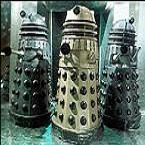Paul Vebber
Posts: 11430
Joined: 3/29/2000
From: Portsmouth RI
Status: offline

|
I posted this earlier on a mine thread. It details the US mining activities in the context of the game.
SInce this whole argument seems to mostly boil down to limiting the location of the real world - NON MOBILE - mine assembly depot at Noumea, to Noumea, i would ask why there is then nto a cry to allow the NON-mobile infrastructure at Pearl to be moved? Or that the player control the upgrade path of aircraft, or teh arrival of ships into theater, or chooing not to focus on the Carrier but the submarine?
Because the game places you in the role of operational commander of teh SW Pacific and as him, you could not control these decisions.
WITP will allow STRATEGIC level decision making with more flexibilty, but there are some things, like the starting locations of major bases - including the Mine assembly base - that are being locatied where they where located. And not being mobile facilities, they can;t be moved!
Later in the war (the one link deals with Seabees building mine assembly depots in 1944 - after a more pro-mining strategic decision was made) one should get more flexibility, and you will have it in WITP.
But I and the otheres on the design and Beta teams feel the patch provides an historically justifiied limitation that reflects what the real commander, SWPAC had to deal with. Air mining was of arguable efficacy, being done altogether in numbers similar to surface mining, but spread out in "penny packets" that were easily countered. You can argue you might have used them differently, but it was really an immature capability that did not become effective until after teh time frame of the game.
It is no more "arbitrary" than any of a hundred other decisions ot based what was avalaible to the player on what was historically available...
When you are CINC PAC in WITP you will have more options (becasue you have the means at that level to influence them)
That's the decision that has been made. It may not be to the liking of those that want to use 10s of thousands of mines, but <3000 were used in real life in the Solomans because that was about all that could be used given the strategic decisions made above the players head.
You will just have to wait for WITP to play an ahistroically high "heavy mining" strategy.
------------------------------------------------------------------------
Note that "Mine tenders" tended minlayers - NOT minfields. Small baots were used to "tend minfields" (ie reseed defensive minefields to fill in holidays where mines broke free or sank.
------------------------------------------------------------------------
US WWII mines primarily consisted of WWI era moored type MKVI with the K-device. Use of aerial laid magnetic bottom mines offensively in enemy waters increased steadily as the war went on. Remote controlled bottom mines were also used defensively in many US ports between the wars, and were in place in a great many areas on Dec 7th 1941, including San Francisco, Boston, New York, Los Angles/Long Beach, Portland ME, the Chesapeake and Delaware Bays, the Straits of Juan de Fuca and Columbia River entrance. Many more were laid during the war, mostly in US ports, but also at Guantanamo Bay, Cuba, Manila, Philippines, Puerto Rico and St. Thomas.
Against Surface ships the maximum depth bottom mines of that era are effective is about 20 fathoms (120 ft) they can cause damage to poorly constructed vessels to about 30 fm, but the magnetic coil sensors may not “see” the target signature properly the deeper the mine and slower the vessel goes. Moored mines could be effectively used down t about 100fm, below which depth internal currents made it almost impossible to keep them close enough to the surface to be effective.
The stockpiles of MKVI mines was of dubious quality, and it was late 43 before “new” generation mines were available in any numbers. Those used in the Uncommon Valor context were nearly all these WWI type.
Defensive minefields were laid off Manilla Bay and Subic Bay, by Bird calss minesweepers before the war started. in the Pacifc at Pago Pago by the Bird class KINGFISHER in late Dec 41 – 82 mines off Cape Faguaso and Taema Bank. These were the first mines laid by the USN in WWII.
In the Uncommon Valor Area of Operations the following Defensive mining ops of note ocured (many other smaller minelays occurred, but these described here represent those ordered as part of what the game would consider “Mine-laying Task forces”
In March 42 GAMBLE and RAMSEY planted six more minefield of Tuila for a total of 400 mines. These were still old WWI MKVI types as the newer WWII era mines were still yet to get out of production.
GAMBLE, RAMSEY and KINGFISHER then sailed to Fiji where they laid 26 mine fileds totaling 843 mines.
RAMSEY and MONTGOMERY laid fields in May and early June 42 at the entrance to Apra Harbor on the island of Efate
After the Efate mining op, MONTGOMERY sailed to the Tonga Group and laid some 551 mines around Tongatabu. Nature itself kept trying to sweep this field as on several occasions many explosions were observed form the field , shortly after which dozens of whale bodies floated into the harbor.
August 2 42 GAMBLE, TRACY and BREEZE laid fields at both ends of the Segond Channel between Espiritu Santo Island and Aore island. Unfortunatley USS Tucker (DD-374) escorting SS Nura Luckenback, struck a mine and sank within hours. BREESE made a mad dash through an uncharted channel it knew existed and picked up surviors. This field claimed a second friendly transitor in Oct 42, whenthe troop transport President Coolidge tried to deliver 5050 troops and heavy weapons to relieve Guadalcanal’s defenders. Despite repeated warnings she was standing into danger, the transport ignored the channel markings and plowed into several mines, ran aground on a reef and later sank. She is now one of the most dived wrecks in the area. Only four lives were lost, miraculously form the 5100+ aboard.
After patching the hole the President Coolidge left in the Segond Channel field in Dec 42, In Feb 43 GAMBLE laid a field at Nandi Waters, composition unknown.
Episodes like the Tucker and President Coolidge are why more extensive use of defensive minefields was not used more extensively.
Offensive mining
The vast majority of Offensive mining was Areial mining of Japan’s home waters in two zones. In the outer zone, 7762 magnetic, 960 acoustic, 124 mag.acoustic combination, 33 pressure/magnetic and 268 contact fdrifting mines (all in the Yangtze river) mines were laid. 106 dummymines were laid in the India Burma theater. In the inner zone 4291 magnetic, 3507 acoustic, 2959 acoustic/pressure combination, 748 low frequency acoustic. A total of 22,919 were loaded and 21389 deployed for an efficiency of 93.3% Mines laid per aircraft loss was 231. Less than half of those lost were to enemy fire. This caused 1,067,963 tons of Japanese shipping sunk and 1,221,453 damaged and later repaired. That likely represents only a fraction of what was actually lost, as most records were lost.
Despite this offensive mining was not part of any general plan or war plan, most were originated at a low level and sent up the chain were they were approved. Naval mines were generally deemed “orphaned weapons” of WWI. Despite its effectiveness it was “too little, too late” to affect overall strategic bombing resource allocation.
“Operational” level aerial minlaying occurred throughout the Uncommon Valor area and timeframe. The first aerial minelaying in the Solomons was done by TBF bombers from VT-11 and USMC VMSB-143. All told 10th Army Air Force flew 143 mining sorties with 505 mines on target at a cost of 2 planes, 14th AAF flew 32 sorties with 1092 mines laid and lost 4 planes. 20th Bomber command flew 162 sories laying 987 mines and lost no planes, 5th AAF, under the command of MacArthur, who had unusual derision for mines as a “losers weapon” flew only 4 sorties laying 24 mines (probably resulting the squadron commander being sacked…) The RAAF flew 1128 sorties with 2498 mines on target at a loss of 11 planes.
Submarine mining of Japanese home waters proved VERY efficient, with fewer than 700 mines sinking at least 27 ships and damaging some 30 others. IN the Uncommon Valor AOR, the following Offense minelays occurred:
Between Aug 7, 42 and may 44 DMs and LCI’s laid some 2817 moored contact mines and 12 magnetic ground mines in 17 fields in the Solomon Islands area from Guadalcanal to Bougainville. The first of these was Aug 8 42 when TRACY laid a string of 84 mines in Marimasike Passage along the East coast of Maliata Island. Though it produced no known results, it eliminated a short cut for japans Destroyers, and keep at least one peace of coastline occupied by the USMC, protected. For the next few months a few high speed minelayers, APD’s, old WWI destroyers converted to minelaying were the first line of defense for US forces in and around Guadalcanal. After the 3rd battle of Savo Ilsand most other US warships were withdrawn form the area to avoid being found by the large number of Japanese forces in the restricted waters of the Solomon chain.
The old WWI 4-stackers managed to get their licks in as GAMBLE 9DM-15) sank the I-123 on Aug 29 42. Oddly the GAMBLE carried the same hull number as the Japanese sub she sank, which was a designed minelayer, possibly engaged in the same activity as GAMBLE when sunk. SOUTHARD a DMS, happened upon the I-172 and managed to get a 4in round through her conning tower as she surfaced for a look around following a long chase.
On Feb1st 43 TRACY, MONTGOMERY and PREBLE left Noumea (where the mine depot for the entire theater was located and all minelaying missions had to leave from) and headed for Doma Reef, between New Georgia and Santo Isabel Islands. This was on the route generally taken by the Tokyo Express. A few hours before the scheduled minlay, coast watchers reported “a whole bunch” of warships headed for the area – actually 14 ships mostly destroyers, but with a handful of Cruisers. The MinDiv Commander LCDR J.L. Collis, also skipper of the Tracy, orders all ships to proceed at flank speed, by 1900 hours the group was charging through Lengo channel off the eastern end of Guadalcanal. All the other US ships were hightailing it the other direction. By now darkness at fallen and with it came a series of squalls that made it impossible to see from ship to ship. The group literally managed to lay their field, in nearly impossible conditions, right under the Japanese noses, and the Destroyer Makiguma, trying to sneak down the coast of Guadalcanal to harass the Marines, found one of Tracy’s mines to be the first Japanese vessel sunk by offensive minefields. Collis received the Legion of merit and promotion to Full Commander and the MIDIV was awarded the Presidential Unit Citation.
GAMBLE , BREEZE, and PREBLE again set out 4 MAY 43 and loade form the SS James McPherson, which was used to shuttle mines from the depot at Noumea. At Tulagi they met RADFORD, which was a new 2100 flush deck with radar. Beset by squalls once again and suffering leaky boiler on GAMBLE and a defective fireroom blower on BREESE the MINDIV managed to get the field in place. IT was found by the Japanese on May 8th as four destroyers tried to run the Blackett Straits. The next morning the coastwatcher on Guadalcanal reported 3 ships in the passage, one burning, one DIW and the other rendering assistance. Unknown to him the 4th had sunk in the night. This news was greeted at Hendeson field with a “Saddle up boys, we have STATIONARY TARGETS”. Within 2 hours 60 SBD’s, TBF’s, F4U’s and P-40s took off to deal with the fish in the barrel. Oyashio – the undamaged one took a 1000lb bomb, Kuroshio and Kagero were either abanonded from the straffing, or stranded on shoals. Remarkably, the Michisio’ profuse fire likely saved her as she seemed to be ignored by the wolves overhead who apparently thought here going down, and slipped away.
On May 12th James Mcpherson with RADFORD in the van led the MINDIV to the Kula Gulf between Kolombangara and New Georgia were they laid 255 mines again, right under the noses of the Japanese. ADM Halsey sent a personnel note of congratulations to the CO’s of the ships involved.
After a 10 day R&R in Brisbane, GAMBLE, PREBLE and BREESE once again met up in Noumea at the new mine depot at Duco Peninsula. They left 29 JUN 43 with new escort PRINGLE and headed for Efete to meet up with MONTGOMERY. They deployed several hundred mines off Shortland and returned to Purvis Bay.
The next major sortie f the MINDIV was 24 Aug 43. This was to be a “hot run” so upon leaving for Vella Lavella and the Japanese airfield at Kahili so the destroyers NICHOLAS, O’BANNON, TAYLOR, and CHEVALIER joined PRINGLE. They would drop a few shells on the airfield at Munda if they had no other action. 252 mines went in the water and the minelayers began to turn to head back for home when either PREBLE turned too late or MONTGOMERY turned too early. In any case despite MONTGMERY’s emergency maneuvering and PREBLE trying to maximize her turn rate, Preble sliced into the side of MONTGOMERY. Though no one was hurt, Montgomery was reduced t 10 knots and was taking on a dangerous amount of water. Despite 4 bombs being dropped but missing badly, she managed to find a Squall (Minelayeers semed particularly adept at attracting thunderheads!) and lipped away.
Supporting the planned invasion of Bougainville was the next minelaying event, begun 1 NOV 43. The minelay began 0100 on the 2nd and 176 mines off Otua Island. At 0230 as GAMBLE,BREESE, and SICARD were leaving they passed two destroyer squadrons and a cruiser division going the other way. The Battle of Emperor Augusta Bay commenced at 0247.
On 8 Nov TRACY, PRUITT, GAMBLE, and SICARD planted 350 ines near Otua to keep the Japanese form sneaking down the mortheast side of Bougainville. That was the largest single field planted in the Solomons.
Then on 24 Nov GAMBEL, TRACY, PRUITT, and SICARD laid 252 mines from Moila Point to the Turube Channel, closing off all access to the Shortland area.
In November 43 the forward Mine Assembly Depot #4 at Guadalcanal was operational and was used to supply aerial mines to Navy, Marine and RNZAF seaplanes which dropped 42 mines into the narrow pass between Buka Island and the extreme NW tip of Bougainville. Japanese supply barges were using the sheltered pass to ferry supplies, out of sight of US forces on the island. This did little to stem the flow of supplies however as the mostly wooden barges didn’t have the draft, speed or signature to actuate the mines.
SICARD and BREESE with the DD HALFORD planted 168 mines on May 2 1944 near Taiof Island and 168 more in the East Buka Passage. Still the supplies were getting through.
In a last ditch attempt to end the barge supply problem, a group of PT boats were sent up from the Treasury Is. To scout the coast and check the soundings (which turned out to be bad) and found the only way to block the channel was to do some very shallow water mining. LCI’s 59 and 68 carrying mines supplied and assembled at Torokino Depot #5 snuck into the very mouths of the Hongoria, Mobiai, Mibb, and Purita Rivers (from which the Japanese barges were operating) and left 3 MK 13-5 magnetic mines in each river entrance. That ended the mining efforts in the Solomons.
In total 13 fields were laid by DM's consisting of 2617 MKVI mines with the K device (an automated plumb bob for depth setting) were laid in 34 sorties. The 12 MK13-5’s laid by the LCI were the only magnetic mines used in the theater. LCIs also laid 200 MKVI's
Most of this was taken from "NAVAL MINESWEEPING: Where teh fleet goes, we've been" Published by the Naval Mine Warfare Association, written form the Oral historyies of its members who performed in the actions by Dick Hansen.
|
 Printable Version
Printable Version













 New Messages
New Messages No New Messages
No New Messages Hot Topic w/ New Messages
Hot Topic w/ New Messages Hot Topic w/o New Messages
Hot Topic w/o New Messages Locked w/ New Messages
Locked w/ New Messages Locked w/o New Messages
Locked w/o New Messages Post New Thread
Post New Thread